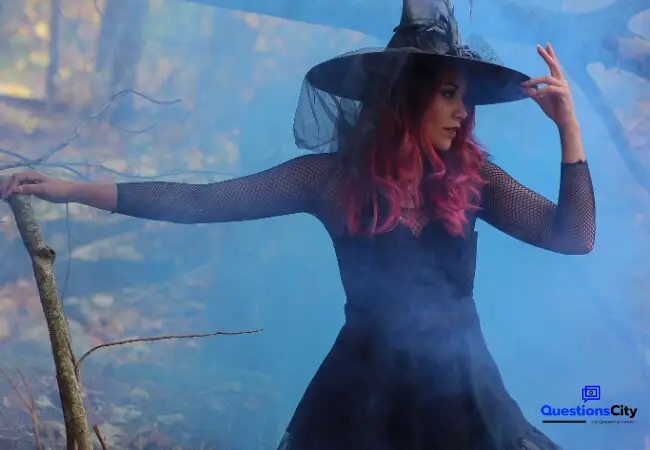Last Updated on August 12, 2021 by
Man is afraid of many things. When he cannot understand why things happen, especially if he feels frightened or is injured by them, he tries to explain it in some mysterious way. The belief in witchcraft was one way of explaining such things as drought, thunder and lightning, and mental and physical illness.

A witch was supposed to be a person of great power and authority, who used that power to do harm. Some people believed that the Devil helped witches do their evil work. Usually, the witch was a woman, and she would ride about at night on a broomstick. If the witch was a man, he was called a wizard or warlock.
Witchcraft had a firm hold on the imaginations of the common people hundreds of years ago. They lived in ignorance, superstition, and fear. But the surprising thing was that many educated people believed in them, too. This was because it was a very easy way of explaining unforeseen disasters.
In early Christian times, witches were believed to have sold their souls to the Devil, a pagan god, or other evil masters in return for supernatural powers. In 1484, Pope Innocent VIII issued a papal bull formally condemning witchcraft, partly because the terrible plagues that swept Europe were blamed on witchcraft.
During the seventeenth century, both Roman Catholics and Protestants began a witch hunt that brought death to thousands. In England, there were professional witchfinders who went about the countryside looking for marks of witches and identifying persons as witches.
Between 1647 and 1663, hundreds of people in Massachusetts and Connecticut were accused of witchcraft. Today, doctors believe that many of the dreams and visions that were blamed on witchcraft were really the products of hysteria or mental illness.
What Are The Different Types Of Wizards?
1. Black Mages, mages who practice offensive magic.
2. Blue Mages, mages who copy enemy abilities.
3. Red Mages, mages who are jacks-of-all-trades.
4. Summoners, mages who conjure up sacred beasts and deities.
What were witches blamed for?
Answer- Witches were blamed for troubles with livestock, any unknown diseases, and unpredicted weather changes.
How many witches were killed in Scotland?
Answer- Modern estimates indicate that more than 1,500 persons were executed; most were strangled and then burned.
When was the last witch killed in Scotland?
Answer- In 1727 one of the most brutal episodes in Scottish history came to an end as the country’s last witch-burning took place.
Where did the term witches come from?
Answer- The terms witchcraft and witch derive from Old English wiccecraeft: from wicca (masculine) or wicce (feminine), pronounced “witchah” and “witchuh,” respectively, denoting someone who practices sorcery; and from craeft meaning “craft” or “skill.”






